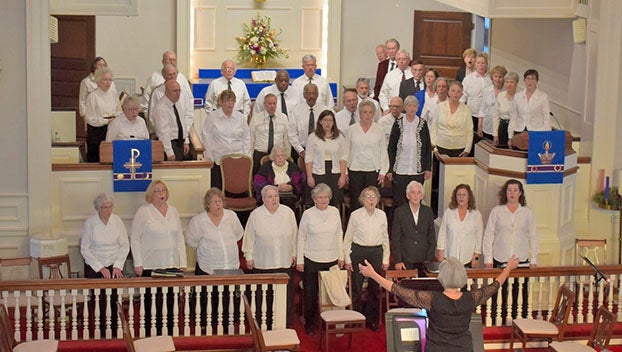Spider webs add seasonal ambiance
Published 6:46 am Friday, October 2, 2020
|
Getting your Trinity Audio player ready...
|
Mother Nature has been decorating my yard for Halloween.
Because of her exuberant placement of spiders and webs, I’m feeling more prepared for the annual arrival of ghouls and goblins than ever before.
Since moving to Virginia, I have been surprised by the commonwealth’s vast profusion of spiders. The University of Richmond even has a spider as its mascot. Nevertheless, until a recent morning when I walked out my front door and was met by a large, dew-encrusted web sparkling in the sun, I hadn’t paid much attention to my eight-legged neighbors.
A few mornings later, my front lawn was dotted with webs. Then one afternoon, I watched a spider at work among the branches of a chestnut oak. The ever-increasing display of web technology culminated with a huge masterpiece placed between two utility lines. I decided it was time I learned more about spiders.
I turned first to my bookshelf, where I had a copy of The Field Guide to Insects and Spiders of North America, by Arthur V. Evans had some information. I also discovered a fact-filled treasure trove from the Burke Museum and stumbled upon several websites devoted to spider pictures and identification.
My exploration reminded me that spiders are arachnids, a category of creepy crawly things with eight legs. The classification explains why a fear of spiders is called arachnophobia. I learned that spiders aren’t the only kind of arachnids. The group also includes ticks, mites and scorpions. After studying some pictures, I was starting to feel a bit arachnophobic myself.
The diversity of the webs surrounding my home was an indication that many different spider species lived with me. Not all spiders spin webs, but the ones that do can be categorized by their styles.
Orb weavers make the circular type of web that first comes to mind when thinking about spiders. Spun in a wheel shape, this type of web features an intricate lattice pattern inside a hub and spoke system. The creative inhabitant of the web on my porch seemed quite shy, and getting a sufficiently good view to identify him (or her) proved problematic. It may have been a variety of spotted orb-weaver.
The gauzy dinner-plates scattered across my lawn turned out to be two different types of webs. Some were horizontal sheets, made by a class of spiders known as sheet web weavers. These are tiny things that live between the web’s layers. I haven’t yet seen one. Some of the sheet-looking webs had funnels at their centers. Their occupants hide within the funnel and wait for prey to arrive. In Australia, one variety of funnel-web spider is known to be deadly, but the ones here in my Virginia lawn are all harmless (at least to humans; they’re lethal to the insects they catch and eat).
I was surprised to discover that cobwebs were a specific type of spider web. Previously, I had thought that cobwebs were old webs that had been abandoned and left to collect dust. And some may be, but cobweb weavers construct webs that appear as uneven, tangled messes. Their snarled, sticky filaments help the spiders catch prey. Most cobweb weavers are harmless, but the infamous black widow spider is a cobweb weaver.
Here in south-central Virginia, the black widow is the only spider with a dangerous bite. The brown recluse, the other type of hazardous spider in the U.S., lives primarily west and south of the Appalachians.
My investigation didn’t tell me why spiders are considered spooky. Perhaps it’s because they seem a little creepy if you look closely. They typically have eight eyes arranged in groups, making them appear more like space aliens than fellow natives of planet Earth. Or, maybe it’s because inadvertently walking into a sticky web is such an icky experience.
Whatever the reason, I have webs aplenty hanging around outside my house. I’m content to let them stay and contribute to the season’s ambiance – as long as they don’t try to come inside for cider and candy.
KAREN BELLENIR has been writing for The Farmville Herald since 2009. Her book, Happy to Be Here: A Transplant Takes Root in Farmville, Virginia features a compilation of her columns. It is available from PierPress.com. You can contact Karen at kbellenir@PierPress. com.





